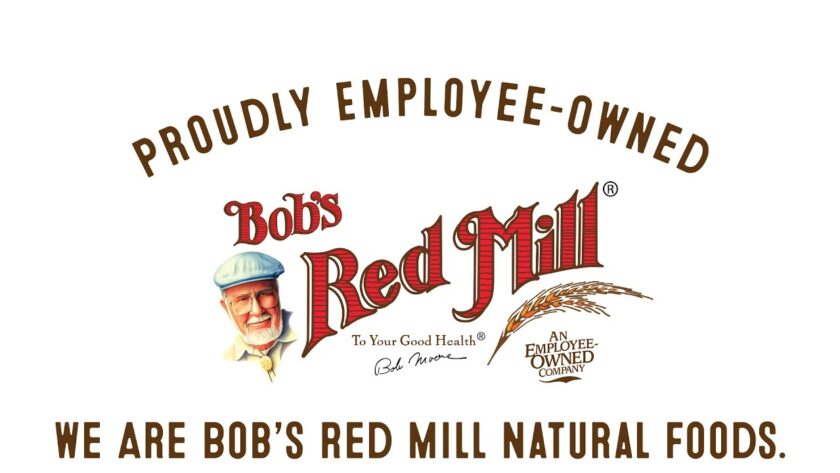Bob’s Red Mill: A Model of Employee Ownership
In an inspiring move that underscores the values of sustainability, equity, and community, Bob’s Red Mill Natural Foods transitioned to an employee-owned company in 2010. This strategic shift not only preserved the company’s cherished values but also set a precedent for how businesses can ensure their legacy and mission endure beyond their founders. Here’s how Bob’s Red Mill successfully transitioned to employee ownership.
The Visionary Behind the Mill
Bob Moore, the co-founder of Bob’s Red Mill, has always been a visionary. He and his wife Charlee founded the company in 1978, fueled by a passion for whole grains and a commitment to producing high-quality, natural foods. Over the years, Bob’s Red Mill grew from a small, local mill to a nationally recognized brand, all while maintaining its focus on integrity, quality, and community.
Why Employee Ownership?
By 2010, Bob Moore was approaching his 81st birthday and began to contemplate the future of the company he had built from the ground up. Rather than selling to a corporate buyer or going public, Moore chose a path that aligned with his values and the ethos of the company: employee ownership.
This decision was driven by several key factors:
1. Preserving Company Values: Moore wanted to ensure that the values of quality, sustainability, and community that had become synonymous with Bob’s Red Mill would continue to guide the company.
2. Rewarding Employees: Recognizing the critical role that his employees played in the company’s success, Moore saw employee ownership as a way to reward their hard work and dedication.
3. Ensuring Long-term Stability: Employee ownership provided a stable and sustainable business model that could withstand the challenges of future market changes.
The Transition Of Bob’s Red Mill Ownership
The transition was facilitated through an Employee Stock Ownership Plan (ESOP). An ESOP is a program that provides a company’s workforce with an ownership interest in the company. It’s a way to align the interests of employees and the company, fostering a culture of shared success.
Here’s how the process unfolded:
1. Establishment of the ESOP: In 2010, Bob Moore established the ESOP trust, which would hold the shares of the company on behalf of the employees.
2. Gradual Transfer of Ownership: The shares were transferred gradually to ensure a smooth transition. This approach also provided time for employees to adapt to their new roles as co-owners.
3. Education and Empowerment: Bob’s Red Mill invested in educating its employees about what it means to be an owner. This included financial literacy programs, governance training, and workshops on collaborative decision-making.
4. Governance Structure: A new governance structure was implemented to reflect the company’s ownership. This included establishing an employee advisory committee to provide input on key business decisions and represent the interests of the employee-owners.
Bob’s Red Mill Outcomes and Impact
The impact of the transition to employee ownership has been profoundly positive for Bob’s Red Mill and its employees.
1. Enhanced Employee Engagement: Ownership has fostered a deeper sense of engagement and commitment among employees. With a direct stake in the success of the company, employees are more motivated and invested in their work.
2. Sustained Company Values: The transition ensured that the company’s core values and mission remained intact. The collective ownership model aligns with the principles of sustainability and community that Bob’s Red Mill champions.
3. Business Performance: The company has continued to thrive, with steady growth and a strong market presence. Employee ownership has contributed to a culture of innovation and continuous improvement.
4. Community Impact: The success of Bob’s Red Mill as an employee-owned company has had a ripple effect in the community, demonstrating the viability and benefits of employee ownership as a business model.
The transition of Bob’s Red Mill to employee ownership is a testament to the power of visionary leadership and a commitment to values-driven business practices. By choosing to transfer ownership to his employees, Bob Moore not only secured the future of the company he built but also set a powerful example for other businesses. In a landscape often dominated by short-term gains and impersonal corporate takeovers, Bob’s Red Mill stands out as a beacon of how companies can grow, thrive, and maintain their core values through employee ownership.
It’s reassuring to me in a world full of companies that acquire and merge that Bob’s red mill will maintain their quality and value moving forward because a big multi-national corporation won’t be diluting the quality or adding fillers, GMO’s or other dangerous ingredients.





